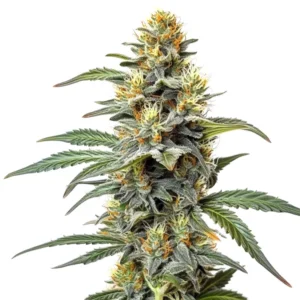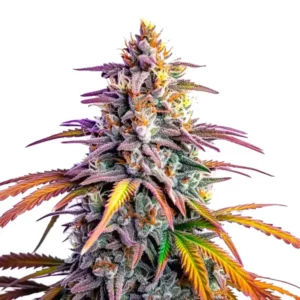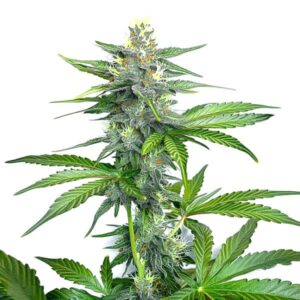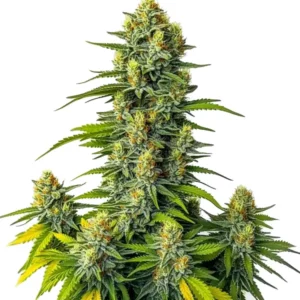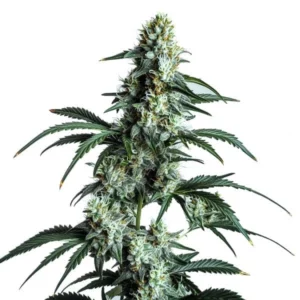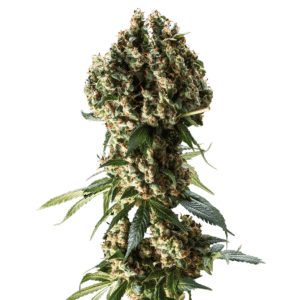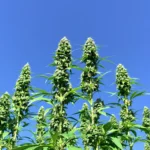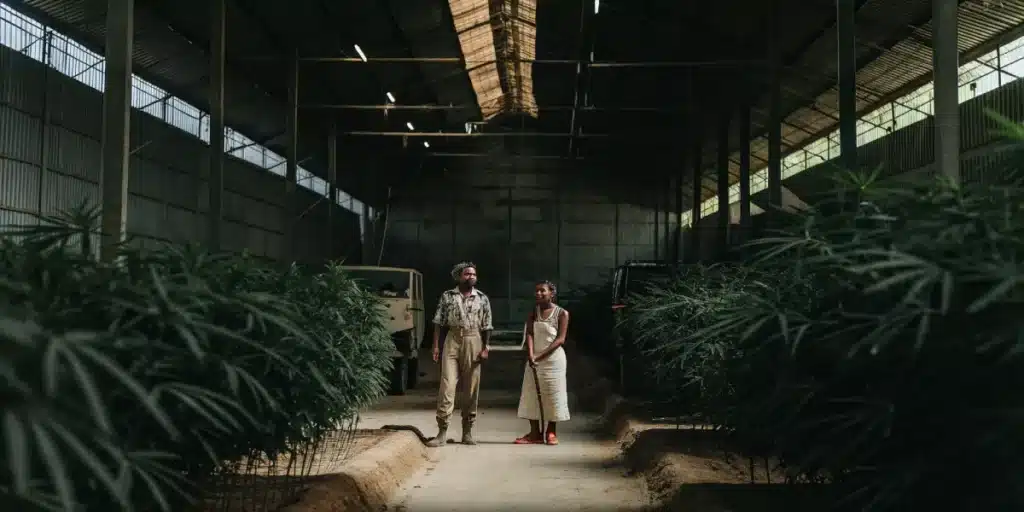
Industrial cannabis in Africa: opportunity or exclusion for traditional farmers?
The rapid growth of the industrial cannabis sector across Africa has sparked intense debate among policymakers, rural communities, and international investors. As more African governments move to legalize or regulate cannabis for medical and industrial use, a critical question emerges: Is industrial cannabis in Africa an opportunity or an exclusion for traditional farmers?
The pace of commercialization has accelerated in countries such as South Africa, Lesotho, Zimbabwe, Malawi, and Uganda. Regulators in these nations have adopted frameworks designed to stimulate investment, create jobs, and position Africa as a global cannabis supplier. Despite these intentions, early evidence suggests that local farmers may struggle to access the new market.
Recommended Strains
Godfather OG
|
|
THC | 26% - 30% (High) |
|
|
Type | Feminized |
|
|
Yield | High |
|
|
Phenotype | 60% Indica / 40% Sativa |
Purple Kush
|
|
THC | 17% - 27% (Medium) |
|
|
Type | Feminized |
|
|
Yield | Medium |
|
|
Phenotype | 30% Indica / 70% Sativa |
According to academic research and industry analyses, industrial cannabis frameworks often favor large, well financed companies. High licensing fees, stringent infrastructure requirements, and strict pharmaceutical grade compliance standards make participation difficult for smallholders. These obstacles create a divide between rural farmers, many of whom have cultivated traditional cannabis varieties for generations, and multinational corporations entering the space.
Moreover, the value chain of industrial cannabis relies heavily on advanced processing facilities, laboratory testing, export-grade packaging, and supply contracts with international pharmaceutical companies. Traditional farmers, who typically work with limited capital, lack the resources to meet these requirements without support. Consequently, the economic benefits of legalization may bypass the very communities that upheld cannabis cultivation long before legalization became a political priority.
Still, industrial cannabis offers genuine potential. Africa’s climate, agricultural expertise, and established informal cannabis economy provide a strong foundation for inclusive growth. If governments adopt farmer-friendly policies, the sector could create thousands of rural jobs, expand export revenue, and support community-based cannabis cooperatives.
To evaluate this landscape, we must analyze the regulatory environment, investment patterns, and case studies from across the continent. We must also consider the function of global seed banks like Blimburn Seeds, which supply commercial genetics used in legal markets worldwide. These genetics influence yield, cannabinoid profiles, and market positioning, factors that determine whether African farmers can compete or remain sidelined.
The following sections explore these dynamics in depth, examining whether the industrial cannabis boom will empower traditional farmers or gradually phase them out of the legal market. Through this analysis, we gain a clearer picture of the opportunities, risks, and policy decisions shaping Africa’s cannabis future.
Regulatory barriers shaping Africa’s industrial cannabis market
African nations embracing industrial cannabis face intense regulatory pressure. Many governments fear that poorly monitored production could fuel illegal markets or jeopardize international trade relations. Consequently, most regulatory frameworks are modeled on European pharmaceutical standards, making compliance costly.
Licensing, for instance, often functions as an exclusionary mechanism. In South Africa, researchers from the University of Cape Town report that licensing fees and cultivation requirements are too high for traditional farmers to enter the legal sector. While industrial cannabis was promoted as a rural development tool, early beneficiaries tend to be established companies that can afford security systems, greenhouses, laboratory testing, and export infrastructure.
This pattern repeats across the continent. Lesotho became Africa’s first country to legalize medical cannabis, yet most licenses went to foreign-owned companies with significant capital. Smallholder farmers, despite having decades of cannabis cultivation experience, struggled to meet requirements such as security fencing, controlled cultivation environments, and traceability systems.
Another major challenge lies in GACP (Good Agricultural and Collection Practices) and GMP (Good Manufacturing Practice) compliance. These international standards are mandatory for companies exporting medical cannabis to Europe or North America. Traditional farmers, who typically rely on open-field cultivation and natural curing methods, are often excluded from markets that demand pharmaceutical precision.
Transportation, storage, packaging, and cannabinoid testing further increase entry costs. Laboratories capable of analyzing cannabinoids, terpenes, heavy metals, pesticides, and microbial contaminants are often located far from rural areas. Farmers must therefore depend on third party companies, which increases costs and reduces profit margins.
Export-oriented cannabis policies in Africa also prioritize large-scale, indoor or greenhouse cultivation. These systems produce consistent cannabinoid levels required by international buyers. However, traditional African cannabis is typically grown outdoors, influenced by local landraces, microclimates, and cultural practices. Without adaptation, these strains may fail to meet export standards, leaving farmers without a place in the legal value chain.
Despite these barriers, there is growing recognition that inclusive policies are essential. Governments, NGOs, and industry leaders are debating reforms such as:
- Cooperative licensing models
- Lower licensing fees for smallholders
- Training and subsidized infrastructure
- Government-backed processing facilities
- Public sector investment in rural cannabis clusters
If implemented widely, these reforms could help traditional farmers transition into the legal sector.
Promos & Deals
The function of genetics: How Blimburn Seeds influences industrial production
Genetics are at the core of any industrial cannabis system. Yield, cannabinoid concentration, flowering time, disease resistance, and terpene profiles depend on the seed stock used. Blimburn Seeds, with decades of cannabis breeding experience, provides professional grade genetics used in global markets. While Blimburn primarily serves licensed growers, their catalog offers insight into how genetics shape competitiveness.
Industrial growers in Africa seek strains with robust structure, high flower density, predictable cannabinoid outcomes, and the resilience needed for diverse climates. Blimburn’s catalog includes varieties that professional growers around the world rely on for these traits. Below are ten Blimburn Seeds strains, each described with at least 25 words, that illustrate the type of genetics shaping global cannabis markets:
- Granddaddy Purple
This indica-dominant strain is prized for its dense purple buds, high resin output, and deeply relaxing effects. Commercial growers value its predictability and strong yields under controlled conditions.
- Blue Dream
A balanced hybrid known for consistent performance, sweet berry aromas, and uplifting effects. Its stability makes it popular among growers focused on batch uniformity and market appeal.
- GG4
Famous for heavy resin production and potency, this strain offers high flower density and robust branching. Industrial cultivators appreciate its strong yield-to-space ratio.
- Sour Diesel
A fast-growing sativa with a distinctive fuel aroma, well-suited for greenhouse environments. Its vigorous vegetative growth helps maximize canopy coverage in commercial setups.
- Gelato
A terpene-rich hybrid known for creamy aromas and balanced effects. Indoor growers choose it for its striking bag appeal and reliable cannabinoid output in premium markets.
- Blackberry Moonrocks
This indica-heavy strain offers high THC content, vibrant colors, and intense flavors. Medical producers value its resin profile for extraction-based products and concentrates.
- Godfather OG
Often noted for its powerful sedative effects, this indica strain provides thick buds and high trichome density, making it a favorite for extraction and premium flower lines.
- Purple Kush
A pure indica with deep purple hues and earthy flavors. Its short stature and compact flower structure suit controlled environments where space optimization is essential.
- Mamba Negra Auto
An autoflowering strain known for rapid flowering, compact size, and generous yields. Growers appreciate its adaptability to diverse climates and fast harvest cycles.
- Critical Auto
A fast-finishing auto strain ideal for warm outdoor climates. It offers heavy yields, strong branching, and a sweet aroma profile suitable for commercial-scale outdoor production.
These professional genetics demonstrate how seed choice influences a grower’s success. Industrial cannabis operations in Africa will likely rely on similar genetics to compete in the global market. However, traditional farmers often rely on local landraces, which, while culturally valuable, may not meet international cannabinoid or yield standards without selective breeding programs.
Economic implications: who benefits from Africa’s cannabis boom?
The African cannabis boom has created an economic paradox. Governments promote legalization as a way to uplift rural farmers, yet early evidence shows that most benefits flow to corporations with capital, technology, and international networks. Knowing this imbalance is essential when evaluating whether industrial cannabis in Africa is an opportunity or exclusion for traditional farmers.
A recent analysis from the University of Cape Town highlights that South Africa’s emerging cannabis sector is primarily controlled by large-scale operators. These companies can afford the high costs of licensing, compliance, and infrastructure, which traditional farmers cannot. For rural communities, the financial barriers create a situation where they remain spectators in an industry built upon their cultural and agricultural heritage.
Industrial cannabis requires:
- Security systems
- Greenhouse structures
- Advanced irrigation
- Laboratory grade drying and curing rooms
- Export-compliant packaging
- Third-party cannabinoid testing
Each of these components adds cost. Traditional farmers, who typically operate on subsistence or small commercial levels, do not have access to such capital. Even micro finance programs rarely cover cannabis ventures due to risk and regulatory scrutiny.
Meanwhile, foreign investors view Africa as a source of low-cost land and favorable climate conditions. Countries like Lesotho, Zimbabwe, and Malawi have already attracted multinational companies seeking to produce medical-grade cannabis for export. These investors often bring their own workforce, or rely on specialized local teams, leaving smallholder farmers with few opportunities.
Another aspect of exclusion involves intellectual property. Landraces, traditional African cannabis varieties, have long been cultivated by rural farmers. However, industrial companies rarely involve these farmers in breeding projects or commercial agreements. As a result, communities risk losing control over their own genetic heritage.
Still, economic opportunities exist if policies shift toward inclusivity. Cannabis cooperatives can help farmers pool resources, share infrastructure, and negotiate better prices. Community-based processing centers could reduce reliance on large corporations. Besides, public sector investment in seed banks, extension services, and training could gradually close the competitiveness gap.
Ultimately, whether the cannabis boom becomes a tool of empowerment or exclusion depends on the political will to create policies that genuinely support smallholder participation. Without such reforms, industrial cannabis in Africa risks replicating historic patterns of land-based inequality.

Local landraces versus commercial strains: a competitive challenge
Africa is home to some of the world’s most iconic cannabis landraces. Strains like Durban Poison in South Africa, Malawi Gold in Malawi, and Kilimanjaro in Tanzania have shaped global cannabis culture for decades. These varieties are known for unique terpene profiles, high resilience, and adaptation to regional climates.
However, industrial cannabis markets often prioritize consistency, high cannabinoid concentration, and standardized yields, qualities typically found in commercial strains from global breeders such as Blimburn Seeds. This creates a competitive dilemma for traditional farmers who rely on landraces.
Commercial genetics offer:
- Faster flowering times
- Higher THC or CBD levels
- Dense, export-friendly flower structure
- Predictable outcomes from crop to crop
- Resistance to common molds or pests
- Data-driven performance metrics
Traditional landraces, while culturally valuable, often show variability in cannabinoid levels and yield. This inconsistency challenges export buyers who need pharmaceutical-grade uniformity.
For example, a strain like Gorilla G4 from Blimburn Seeds delivers high THC levels and heavy resin production, making it ideal for extraction-based markets. In contrast, traditional outdoor varieties may show wide cannabinoid fluctuations due to environmental conditions.
Another competitive issue is flowering time. Many African sativa landraces have long flowering periods, often stretching to 14 weeks or more. Industrial markets prefer faster cycles to maximize greenhouse turnover. Commercial genetics such as Mamba Negra Auto or Critical Auto finish in a fraction of that time, offering growers multiple harvests per season.
Nevertheless, landraces have advantages that should not be undervalued. Their resilience to local pests, drought tolerance, and environmental adaptability make them ideal for outdoor cultivation without heavy inputs. These traits represent potential for breeding programs that integrate local genetic strengths with commercial-grade consistency.
If African nations invest in breeding and genetic preservation, landraces could become valuable assets rather than liabilities. Community seed banks, government-funded breeding initiatives, and partnerships with established seed companies could help traditional farmers participate in high value markets.
Without such investments, the competitive gap between landraces and commercial strains will widen, potentially excluding traditional farmers from industrial supply chains.
Climate advantages and cultivation potential across Africa
Africa’s climate gives it a natural advantage in cannabis cultivation. Across the continent, diverse ecological zones, from Mediterranean climates in South Africa to tropical regions in West and Central Africa, offer favorable conditions for high yield outdoor production. This climatic diversity means Africa could become one of the world’s leading cannabis exporters.
In many regions, long dry seasons allow for extended flowering without excessive mold risk. In others, fertile soils support vigorous vegetative growth. These conditions reduce the need for expensive indoor infrastructure, which plays a critical role in making the sector accessible to smallholder farmers.
However, industrial cannabis regulations often require controlled environments, even when outdoor conditions are suitable. These requirements, designed to meet international pharmaceutical standards, push growers toward costly greenhouses. As a result, Africa’s climate advantage is underutilized.
Yet, if regulations evolve to accommodate high-quality outdoor cannabis, traditional farmers could significantly benefit. Outdoor-grown cannabis can achieve excellent cannabinoid and terpene profiles when cultivated with professional genetics. For example, strains like Sour Diesel or Blue Dream perform exceptionally well in warm climates with long growing seasons, offering high yields and strong market demand.
Autoflowering strains such as Critical Auto and Mamba Negra Auto can also thrive in African climates, delivering multiple harvest cycles in a single year. This flexibility could empower farmers to scale production without complex infrastructure.
Climate resilience is another factor. African farmers have extensive knowledge of local weather patterns and soil characteristics. When paired with the right genetics, this knowledge can improve plant health and productivity. Commercial strains like Blackberry Moonrocks or Purple Kush offer strong resistance to temperature fluctuations, making them suitable for challenging environments.
Despite these advantages, climate alone cannot solve the systemic barriers that farmers face. Regulatory frameworks must recognize the potential of outdoor and mixed-light cultivation. If outdoor cannabis were allowed under medical or industrial licenses, the cost of entry would drop dramatically, opening the sector to thousands of rural farmers.
Economic barriers facing traditional farmers in the African cannabis sector
The rapid emergence of the industrial cannabis industry in Africa has brought high expectations for rural development. However, traditional farmers often face significant economic barriers that limit their participation. Many of these barriers stem from structural inequalities that predate cannabis legalization. As a result, while new markets promise prosperity, small-scale growers struggle to access the capital, equipment, and training necessary to compete.
One of the most pressing challenges is the high cost of compliance. Industrial cannabis in Africa requires strict adherence to national regulations, including seed certification, secure cultivation facilities, and traceability systems. These requirements can easily exceed the financial capacity of traditional farmers. They may have land and agricultural experience, but they often lack the investment needed for irrigation systems, greenhouses, and post-harvest infrastructure. Consequently, large corporations with established capital dominate the space.
Another economic barrier is limited access to formal banking. Many rural farmers do not have credit histories or collateral, which prevents them from securing loans for cannabis production. Without financial support, they cannot establish operations that meet export standards. Meanwhile, international companies enter African markets with millions in investment, creating a competitive imbalance. This dynamic has contributed to the exclusion of small farmers from the higher end of the value chain.
Furthermore, fluctuating global cannabis prices make investment risky. While countries in Southern Africa initially targeted export markets in Europe and North America, regulatory shifts and oversupply have reduced profit margins. Traditional farmers, who typically operate with small safety nets, cannot easily absorb financial losses. When industrial cannabis in Africa is tied to global markets, local growers become vulnerable to international trends they cannot control.
Another major issue is the dominance of foreign-controlled seed and genetics. Many African farmers must purchase imported seeds, which increases production costs. Local landrace genetics—historically cultivated for generations—are often ignored or undervalued by regulatory bodies focused on standardized pharmaceutical-grade products. This exclusion also affects cultural heritage, as communities that nurtured iconic African strains see little benefit from the commercialization of their own genetics.
To address these barriers, governments must invest in policies that support small producers. Subsidies, training programs, and cooperative models can create more equitable industry participation. Without these interventions, industrial cannabis in Africa risks reinforcing old inequalities rather than creating new opportunities.
Industrial cannabis in Africa: opportunity or exclusion for traditional farmers?
The central question: Industrial cannabis in Africa: opportunity or exclusion for traditional farmers?; depends heavily on policy choices and market structure. Cannabis holds immense potential to transform rural economies, yet it can also widen existing socio-economic gaps if left to free-market forces. Knowing this duality is essential for crafting inclusive development strategies.
On one hand, industrial cannabis presents unprecedented opportunities. African soil and climate conditions are ideal for hemp and certain cannabis varieties. Regions like Lesotho, South Africa, Uganda, and Malawi already have favorable agricultural environments, allowing for high-quality production with relatively low inputs. This gives traditional farmers a natural advantage if they are included in the system. Additionally, cannabis offers diverse revenue streams beyond flower production, such as fiber, seeds, oils, biomass, and medicinal extracts. This diversification can stabilize incomes that usually depend on unpredictable seasonal crops.
However, exclusion becomes a real threat when regulatory frameworks prioritize large multinational companies. Many African nations require expensive licenses, annual renewal fees, security audits, and laboratory testing, costs that can exceed tens of thousands of dollars. These barriers directly prevent traditional farmers from entering the legal market. Without modifications, industrial cannabis in Africa may become a sector accessible only to corporate actors.
Another factor contributing to exclusion is land dispossession. In some regions, companies lease or purchase fertile farmland previously used by local communities. Although governments often justify this as economic development, it can displace traditional growers and weaken community-based agriculture. When industrial cannabis is concentrated in industrial parks or private estates, smallholder participation becomes nearly impossible.
Nevertheless, inclusive models do exist. Cooperative farming structures can allow communities to pool resources and share licensing costs. Governments can also allocate specific cultivation quotas to small-scale farmers. These approaches ensure that the economic benefits of cannabis reach rural populations who have historically depended on agriculture for survival. If African countries adopt inclusive frameworks, industrial cannabis could serve as a catalyst for development rather than exclusion.
Ultimately, whether industrial cannabis in Africa becomes an opportunity or a barrier depends on political will. Policymakers must decide whether the industry is meant to enrich corporations or uplift communities. The future of traditional farmers hangs on this choice.

Legal frameworks shaping cannabis opportunities for small growers
Legal frameworks play a defining role in shaping who benefits from cannabis legalization. In Africa, the diversity of regulations—from strict pharmaceutical models to more flexible agricultural approaches—directly influences small growers’ participation. Countries that adopt overly restrictive policies unintentionally exclude traditional farmers, while those that embrace community-centered laws tend to create more inclusive markets.
A major challenge is the pharmaceutical-style licensing adopted by nations like Lesotho and South Africa. These frameworks require Good Manufacturing Practices (GMP), security infrastructure, and laboratory oversight. While such regulations are intended to ensure product safety, they impose costly barriers on rural farmers. For instance, building a compliant facility can require significant investment, making it inaccessible for small growers.
Additionally, restrictions on informal markets create legal risks for traditional farmers. Many African communities have cultivated cannabis, particularly local landraces, for generations as part of their cultural and economic identity. However, legalization often criminalizes their work unless it meets new industrial standards. This shift creates a paradox where multinational companies can legally grow cannabis on African soil, while the communities that historically preserved these genetics remain marginalized.
Export regulations are another limiting factor. Since many African governments target international markets, growers must comply with foreign standards. Meeting the requirements of the European Union or North American markets adds multiple layers of complexity. Traditional farmers who lack resources cannot meet these export conditions, even when their cultivation skills are exceptional.
Despite these challenges, some nations are experimenting with more inclusive approaches. For example, Malawi and Zimbabwe have considered reducing license fees for small-scale growers. South Africa’s ongoing cannabis policy reforms also include discussions about traditional growers’ rights, although implementation remains slow. If governments adopt tiered licensing systems, smallholder farmers could enter the market legally without overwhelming financial burdens.
Legal frameworks must also consider seed sovereignty. Many policies favor imported genetics, overlooking local strains that hold significant cultural and economic value. Protecting African cannabis heritage through seed banks, local breeding programs, and geographic indications is essential for ensuring long-term sustainability.
FAQs about Industrial cannabis in Africa
Why are traditional African farmers often excluded from the industrial cannabis sector?
Traditional farmers struggle to enter the legal cannabis market because regulations require expensive licenses, advanced infrastructure, strict security systems, and compliance with GACP and GMP standards—conditions that favor large, well-funded companies.
Which African countries have advanced the most in industrial cannabis legalization?
South Africa, Lesotho, Zimbabwe, Malawi, and Uganda are among the leading countries with regulatory frameworks designed to attract investment and position themselves as major suppliers of medical and industrial cannabis.
How do commercial genetics like those from Blimburn Seeds influence competitiveness?
Commercial genetics provide higher yields, stable cannabinoid profiles, faster flowering times, and stronger resistance to pests and diseases. This gives industrial growers a competitive advantage, unlike traditional landraces that may not meet export standards.
What economic barriers prevent small farmers from joining the legal cannabis market?
Small farmers face limited access to financing, high setup and compliance costs, fluctuating global cannabis prices, dependency on imported seeds, and an inability to meet export-grade standards without external support.
What policies could help integrate traditional farmers into Africa’s industrial cannabis industry?
Cooperative licensing models, lower fees for smallholders, government-backed training, subsidized infrastructure, community processing centers, and programs that protect and improve local landrace genetics could make the sector more inclusive.




